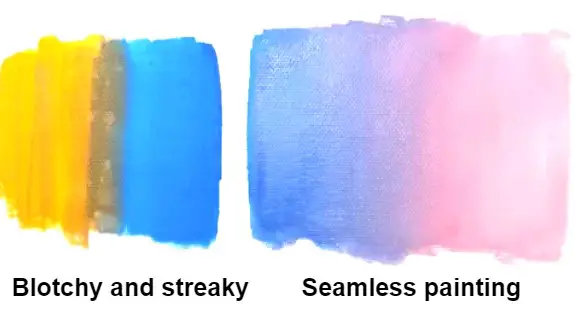Blotchy or streaky acrylic paint is a common problem for most acrylic painting artists. It can be pretty annoying when you cannot make those smooth paint layers and transitions. However, there are a few techniques and tips to fix blotchy or streaky acrylic paint.
In general, blotchy or streaky acrylic paints occur due to thin and watery washes of acrylic paint that dry quickly before smoothing them out. To fix them, use thick layers of acrylic paint, and a soft, dry, mop brush for blending paint layers.
There are many other good techniques and practices you can adapt to fix acrylic paint blotching and streaking such as using a glazing medium and blending colors in the direction of brush strokes.
Why is acrylic paint blotchy or streaky?
There are many reasons for acrylic paint to be blotchy and streaky. In general, the main reason is acrylic paint drying too quickly before we have time to smooth out acrylic paint on the surface avoiding any streaks or blotches. There are some other supporting factors as well. These will be discussed below in detail.
Acrylic paint drying on you quickly
Acrylic paint dries so quickly. That is why applying acrylic paint evenly and color blending is hard with acrylic paint. So by the time you try to smooth out paint, it is already dry with blotchiness and maybe with ridges. Also if you apply a few layers of acrylic paint without smoothing out, it can dry blotchy quickly.
This problem usually occurs when painting a larger area. There is a high chance for the first brush strokes of the large area to dry in a patchy pattern before smoothing it out.
You can paint over an already botchy area with thick paint layers. Work on them quickly before drying out. You can also mist the canvas to slow the drying process. More on this will be discussed later.
Using transparent, thin paint washes
Using acrylic paint very thinly in transparent layers usually causes streaky lines and blotchiness. This can happen with transparent colors such as ultramarine blue. When using these transparent colors, always paint them thickly, but with a little water or a wet brush.
Thin paints can cause ridges and patches in the painting. This can often happen with craft or student-grade paints. There is already less concentration of pigments so streaks can happen. You can get the best color saturation and results by using artist-grade acrylic paint.
Using hard and stiff brushes to blend colors
Hard and stiff brushes can be tricky. Usually, these are made from animal hair (hog brushes). As they are stiff applying smooth paint layers is not easy. It can create ridges and a blotching effect. The best option is to go for soft-bristled synthetic brushes.
If you want to blend colors smoothly without streaks use a soft, mop brush. When choosing a brush use a larger brush for larger areas. Because using a smaller brush with small brush strokes can easily create blotchiness and streaks.
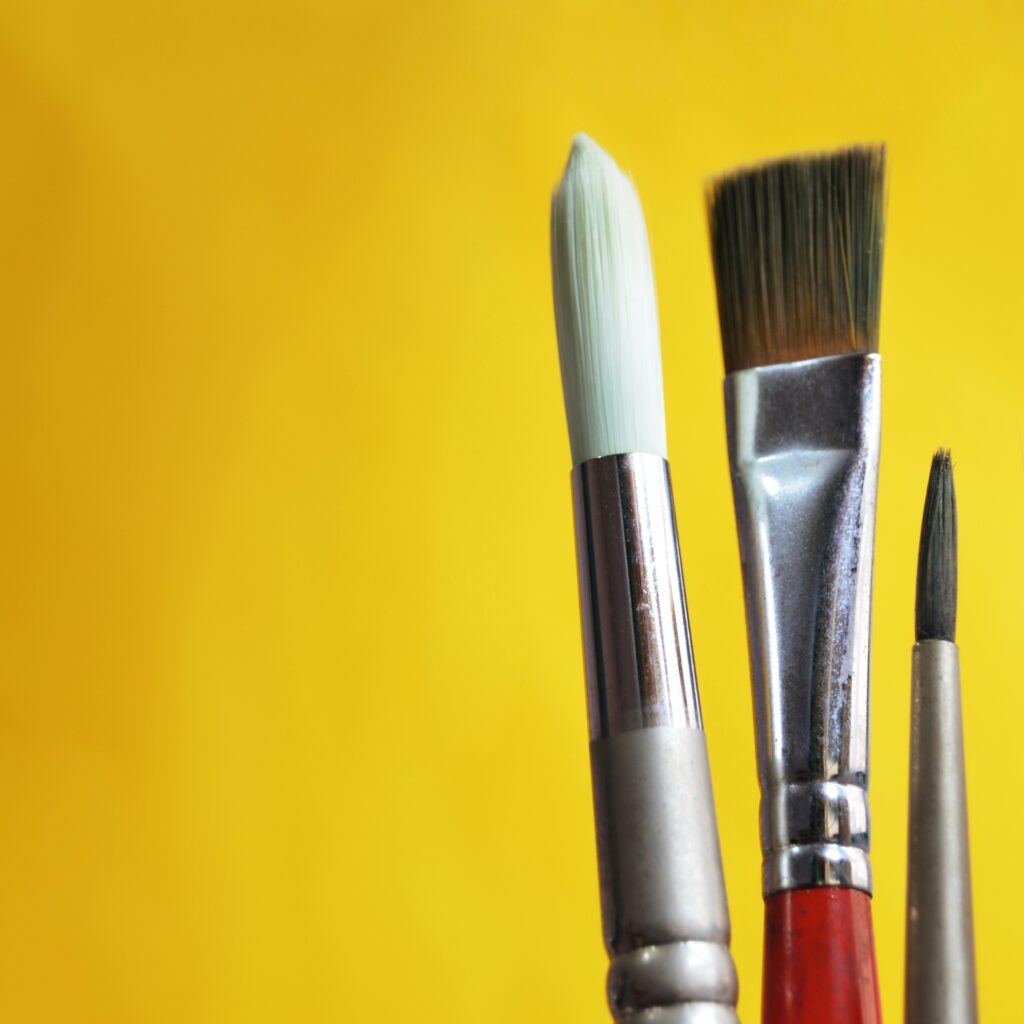
I have written a whole article about ‘13 Best ways to get a smooth finish with acrylic paint‘. You will get to know the best tools to use and techniques to follow for a smoother painting outcome there.
Applying acrylic paint with too much pressure
If you apply acrylic paint with too much pressure on the brush, streaks and blotchiness can happen. Apply paint lightly especially when you are applying paint in thin layers. But always use very light pressure when you are blending colors to avoid streaks.
Using a soft-bristled synthetic brush lightly on the surface helps. Blending colors in the same direction as the brush strokes very lightly will create even acrylic paint layers.
Painting on an unprepared surface
A well-prepared surface is needed to apply paint smoothly and evenly without streaks. If the surface is not prepared or primed with gesso, the paint will be absorbed into the surface and smooth paint application will become harder.
Always prime your surface with gesso or suitable primer before painting. It will help paint glide smoothly on the surface without absorbing into the surface. This helps to avoid streaks and blotchiness in the painting. It will also help the acrylic paint stick better onto the surface.
Also when there is grease, dirt, or oil on a pre-gessoed canvas, the paint will not stick and create blotchiness and patches as below. Therefore always gesso the canvas, if you started to see any blotches or acrylic paint lifting, even if the canvas is pre-gessoed.
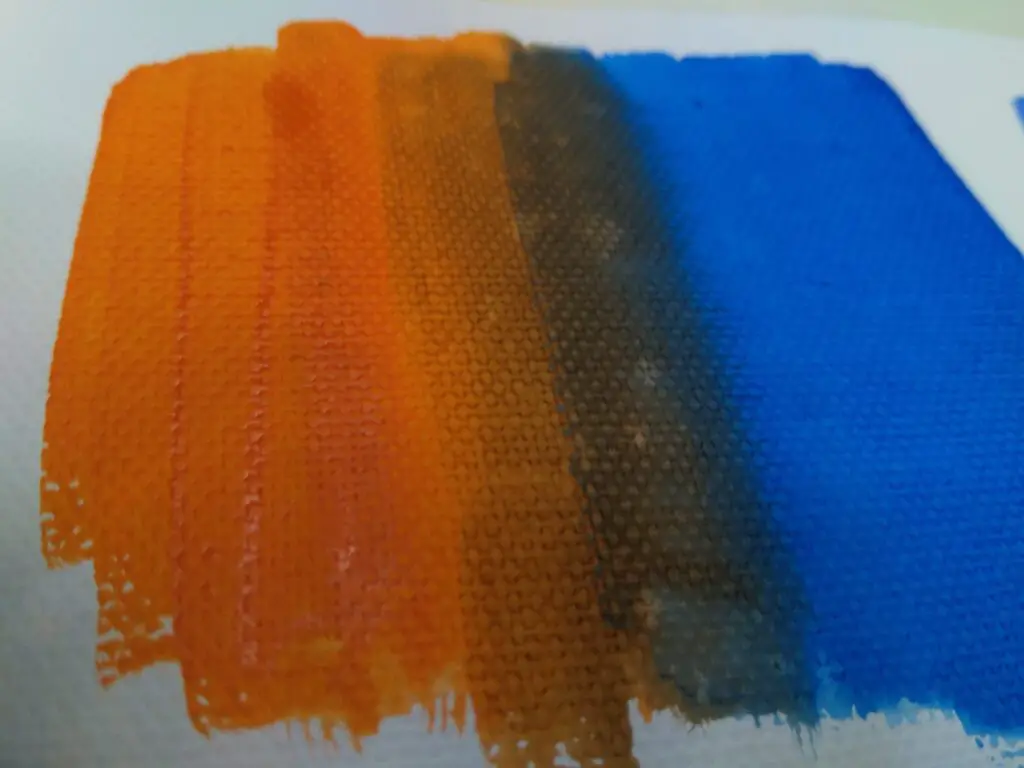
I have written a whole article about acrylic paint lifting. You will find a bunch of reasons causing acrylic paint lifting other than not applying gesso to the canvas there.
10 Best ways to fix blotchy or streaky acrylic paint
There are best practices and techniques you need to follow with acrylic paint. These will helps you avoid blotchiness, and streaks and apply acrylic painting very smoothly. I will discuss 10 of these best practices in detail below (Some of them were already mentioned in the previous section).
How do you fix blotchy acrylic paint?
Simply to fix blotchy acrylic paints, you can paint over the blotches with an opaque layer of acrylic paint first and then apply the paint layers on top following the below tips and techniques. If the blotches are still wet, simply wipe them off with a wet paper towel and paint over them.
1. Use a small water mister to keep the paint wet
Drying too quickly is the main reason for acrylic paint being streaky and blotchy. There are a few things we can do to lengthen the drying time of acrylic paint. You can mist the canvas before painting with a small or micro mister. This will stick acrylic paint on canvas better and blend the colors better on canvas.
If you are blending colors, you can first apply the different colors on the wet canvas. Then you can use a soft dry brush to blend the colors for smooth transitions. Some artists suggest misting the canvas while the acrylic paint is on the canvas and they’re half drying.
I do not recommend this method as paint can easily be lifted off when blending after misting on top of paint layers. Instead, mist the canvas with water before applying paint.
2. Use a soft, dry, mop brush for soft, smooth transitions
A dry, soft, mop brush is especially important if you are doing color blending. First, apply your acrylic colors to the surface separately. Use transition colors in between two colors. As an example, if you want to blend yellow and blue colors use a mixture of yellow and blue colors (green) in the transition area.
Then you can use a soft, dry mop brush to smooth out those transitions. You can use the mop brush to smooth out any ridges, streaks, or patches while the paint is still wet.
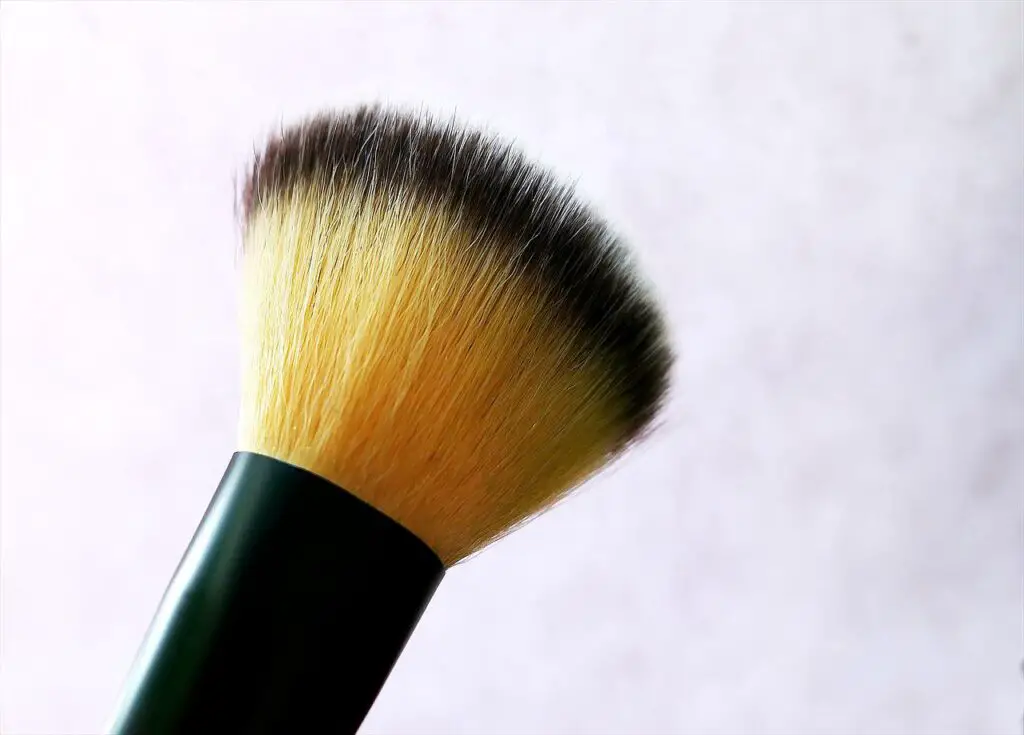
Make sure you use a dry mop brush to smooth out the paint. After using it for one time to smooth out one section, wipe it off with a paper towel to dry it as much, and use it again. If you keep using it wet, the transition would not be smooth and there is a chance to lift paint off the canvas.
3. Premix the main colors and transition colors as well
This is important to avoid any streaks and blotches while you blend acrylic colors. When you are blending two different colors, pre-mix the transition colors so that you can apply these colors between the transition. You can keep these mixed colors on a stay-wet palette to avoid them from drying out.
As an example, if you are blending blue and red, then premix some reddish-purple colors and bluish-purple colors as the transition colors in between. This way you can achieve a smooth transition between two colors without streaks or blotches.

4. Use acrylic mediums for smooth blending
Acrylic mediums can take acrylic paints to the next level. As I said before the main reason for the streaky acrylic paint is its quick drying time. You can extend the drying time of acrylic paint by mixing it with acrylic mediums.
You can use acrylic paint retarders to extend the drying time. You can search for a term like ‘retarder’, ‘slow-dry’, or ‘open’ terms in acrylic paints or mediums. Golden open acrylics are a good choice to extend the drying time. These acrylic retarders smoothen the paint application and help it glide over the surface easily.
You can also use a glazing medium to avoid blotchiness. Mix a little glazing medium with paint and paint on top as a glaze. This way you can get a seamless blend of colors. You can also use acrylic mediums to thin the paint. As medium provides thickness to paint there will be fewer streaks.
You can also use an acrylic flow improver to improve the flow of acrylic paint. This can break ups the surface tension of acrylic paint and help it flow better. It helps to reduce streaky brush strokes.
5. Use the airbrush technique for seamless painting
Airbrushing is one of the popular techniques used by many painters. Now you can use airbrushing techniques on acrylic paint as well. Airbrushing can eliminate any brush strokes. There will be no streaks or blotchiness in your painting with airbrushing.
To airbrush with acrylic paints use soft body acrylic paint or acrylic ink and acrylic airbrush medium in a 1:1 ratio. You can adjust this ratio according to the needle size and pressure of the airbrush. You can also use heavy body acrylics with an airbrush, but you will need to strain the mixture to avoid any particles.
You can find Golden acrylics airbrush medium and Liquitex professional airbrush medium on the Blick Art Materials online store for the best deal.
6. Move quickly to blend colors before drying
The biggest contributor to streaking and blotching with acrylic paint is the fast drying nature of acrylic paint. Therefore when applying paint you need to move quickly. Mix the colors on the palette quickly. You can always use a mister to keep paint from drying.
You can always mist the canvas with the mister as well as the paint to give a little more time for you to smooth out those ridges. But in general work quicks as this is acrylic paint if you are not using any slow-drying acrylic mediums.
7. Paint in thick layers to avoid streaks and blotching
Painting in thin transparent layers always has a risk of creating streaks. Therefore only add a little water to your paint if you are using heavy body acrylic paint. You can paint straight out from the bottle if using soft body acrylic paint.
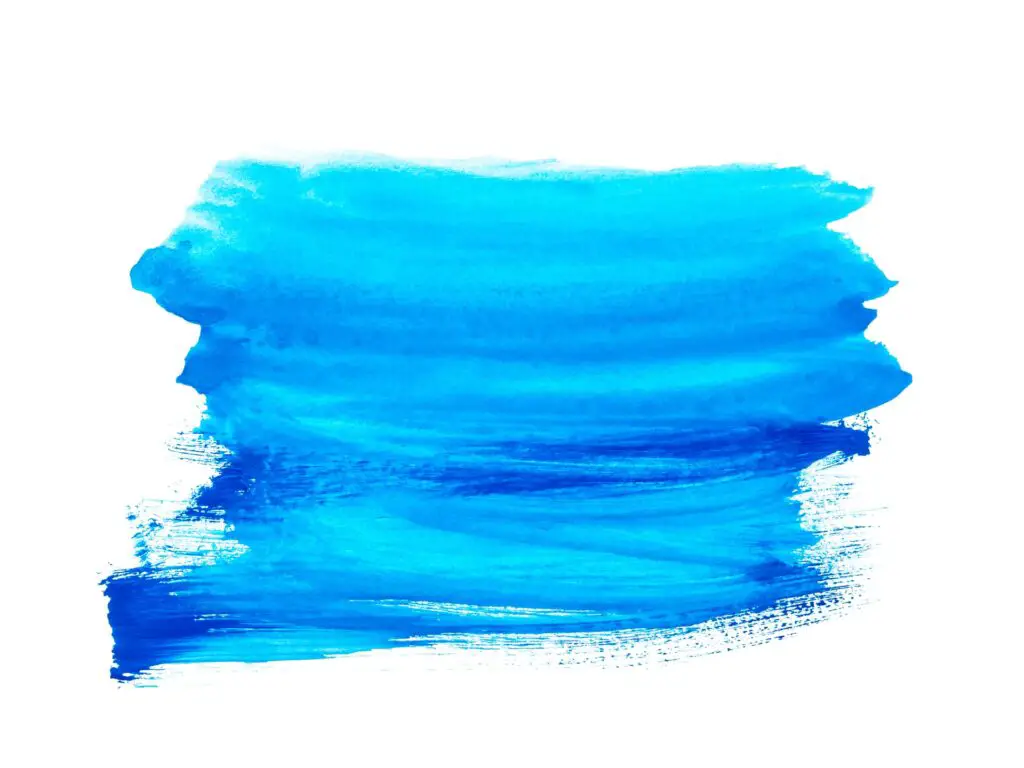
To apply paint smoothly and evenly, wet the brush and add a little water until the paint can smoothly glide over the surface. Load up your brush fully before applying paint. Thicker paint always works in your favor than transparent thin paint.
Opaque colors work the best for color blending rather than transparent colors. If you want to blend transparent colors add very little water to avoid streaks and patches. Paint transparent color thickly.
8. Use very light pressure when blending
To avoid streaks and any blotches you need to apply very little pressure on the brush. Applying paint with pressure can always lead to streaky brush strokes. Therefore only use a little pressure, especially when blending two colors.
Use the mop brush with very light pressure and swiping motions when blending colors. When you are only softly touching the surface with the brush, there is very less chance to create streaks, blotches, or any patches.
9. Use artist grade or good quality student grade acrylic paints
Using good quality paints can always be in your favor. Craft or student-grade acrylic paints have less pigment concentration and are thinner. Thus they can create more streaks and blotchiness. But artist-grade acrylic paints are very rich in pigments. Therefore the gradients created by artist-grade paints are less streaky and bring out the best in colors. This is a bonus tip to bring out the best in your artwork.
10. Blend along with the brush strokes
Most of the time when we are creating a color gradient we will paint colors in straight lines in one direction. That is the direction of your brush stroke. When you want to blend colors, you need to follow the direction of the brush strokes.
As an example, if you painted red and blue colors in horizontal brush strokes, you need to blend colors horizontally and not vertically. This will create seamless color blends and avoid unwanted streakiness in the painting.
I have written an article series about common acrylic paint questions and answers: part 1 and part 2. You can find answers to questions like this in the articles even before you face them.
Conclusion
Unlike oil paint, it is very easy to make streaks and blotches with acrylic paints. Oil paints dry very slowly so you have time to smooth out any mistakes with oil paints. But with acrylic paints, it is already dry by the time you look to smooth out the paint. Therefore you need to practice the techniques and tips I have mentioned above for better results. Try to keep your paint wet as much, use only light pressure on the paintbrush, and use only soft brushes.

